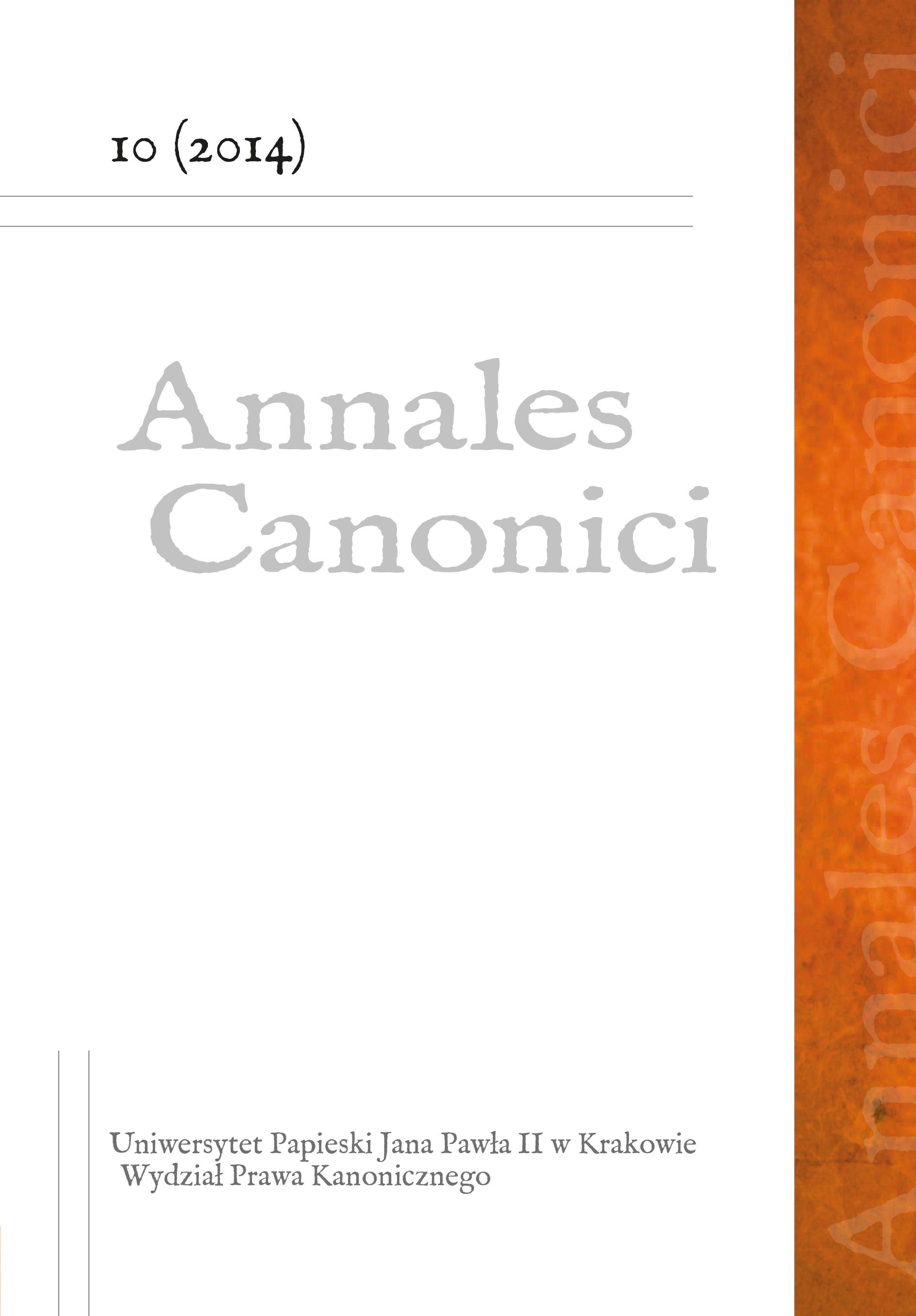Kim jest proboszcz zakonny? O relacji między przełożonym zakonnym a proboszczem w parafii powierzonej instytutowi zakonnemu
DOI:
https://doi.org/10.15633/acan.630Słowa kluczowe:
religious pastor, religious parish, local Superior, canon law, parishAbstrakt
This article presents the problematic concerning the relationship between the local Superior and the religious pastor in a parish entrusted to a religious institute, when these offices are not held by the same person. The Author presents briefly a historical evaluation of the concept of the religious parish, i.e. the movement from the beneficium to the communitas. According to the Author there are 3 principles organising this commitment: the salvation of souls, the work (opus) of the institute, and the principle of conserving religious identity. Following these principles, the Author expresses his opinion regarding the limitation of the religious pastor as “pastor proprius paroeciae”, and emphasises the fact that the religious pastor is first of all a religious, without any special rights in the religious community. Lastly, according to the Author, it would be better for religious life to use the canonical office of moderator rather than that of the pastor (cf can. 517, 1983 CIC 1983).
Bibliografia
Delgado C., De relationibus inter parochum religiosum et eius superiores regulares (cum respecto particulari ad ius speciale O.F.M.), Romae 1940.
Dunn K. J., The Commitment of a Parish to Religious in the 1983 Code of Canon Law by Means of a Written Agreement, Romae 1992.
Mamede V., O convênio entre os bispos diocesanos e os superiores maiores dos institutos religiosos clericais a teor do cânone 520 § 2, „Commentarium pro Religiosis et Missionariis” 84 (2003) nr 1–4, s. 69–106.
D’Ostilio F., Il parroco religioso. Origine ed evoluzione storica della parrocchia religiosa. Figura giuridica del parroco religioso, Città del Vaticano 2000.
Palmieri A., Parishes Entrusted to the Care of Religious: Starting Afresh from Christ, [w:] Canon Law Society of America Proceedings 2002, Washington DC 2002, s. 209–239.
De Paolis V., De paroeciis institutis religiosis commissis vel committendis, „Periodica de re morali, canonica, liturgica” 74 (1985) nr 1–3, s. 389–417.
De Paolis V., Schema tipo di convenzione per l’affidamento delle parrocchie ai religiosi, „Informationes SCRIS”12 (1986), s. 133–150, 233–259.
De Paolis V., Vita religiosa e parrocchia. Criteri giuridici, [w:] Vita religiosa e parrocchia. Atti della XXIV Assemblea Generale CISM, Collevalenza (PG) 12–16 Novembre 1984, a cura di Segreteria CISM, Roma 1985, s. 154–178.
Podlecki Z., Niektóre aspekty relacji prawnych między klasztorem a parafią przy klasztornym kościele parafialnym, „Roczniki Nauk Prawnych” 9 (1999) z. 2, s. 61–71.
Primetshofer B., Relacje prawne między klasztorem a parafią przy klasztornym kościele parafialnym, [w:] Służba i praca. Materiały II Międzynarodowego Sympozjum Prawa Zakonnego (Lublin, 17–18 X 1994), red. B. W. Zubert, E. Szczot, Lublin 1996, s. 153–189.
Sobański R., Powierzenie parafii zakonnikom wg motu proprio „Ecclesiae Sanctae”, „Prawo Kanoniczne” 11 (1968) nr 1–2, s. 61–80.
Pobrania
Opublikowane
Numer
Dział
Licencja
Autorzy publikujący w czasopiśmie udzielają jego wydawcy zgody o następującej treści:
- Autor zachowuje autorskie prawa majątkowe do utworu, a jednocześnie udziela wydawcy czasopisma zgody na jego pierwszą publikację w wersji drukowanej i wersji online na licencji Creative Commons Uznanie autorstwa 4.0 Międzynarodowe oraz zgody na wykonywanie opracowań, w tym przekładów.
- Autor ma możliwość udzielania zgody niewyłącznej na opublikowanie utworu w wersji, która ukazała się w czasopiśmie (np. zamieszczenia go w repozytorium instytucjonalnym lub opublikowania w książce), wraz z informacją o jego pierwszej publikacji w czasopiśmie.
- Autor może umieścić swój utwór online (np. w repozytorium instytucjonalnym lub na swojej stronie internetowej) jeszcze przed zgłoszeniem utworu do czasopisma.

